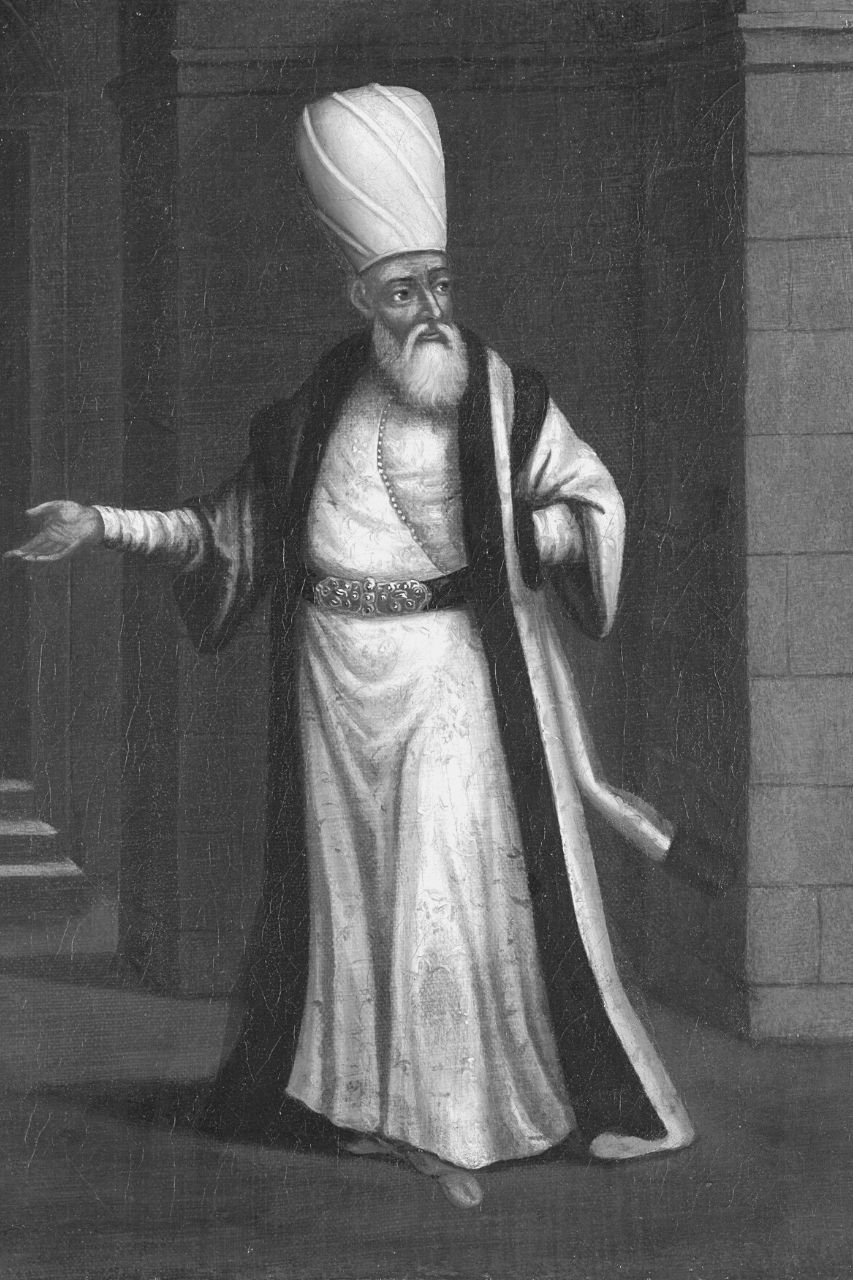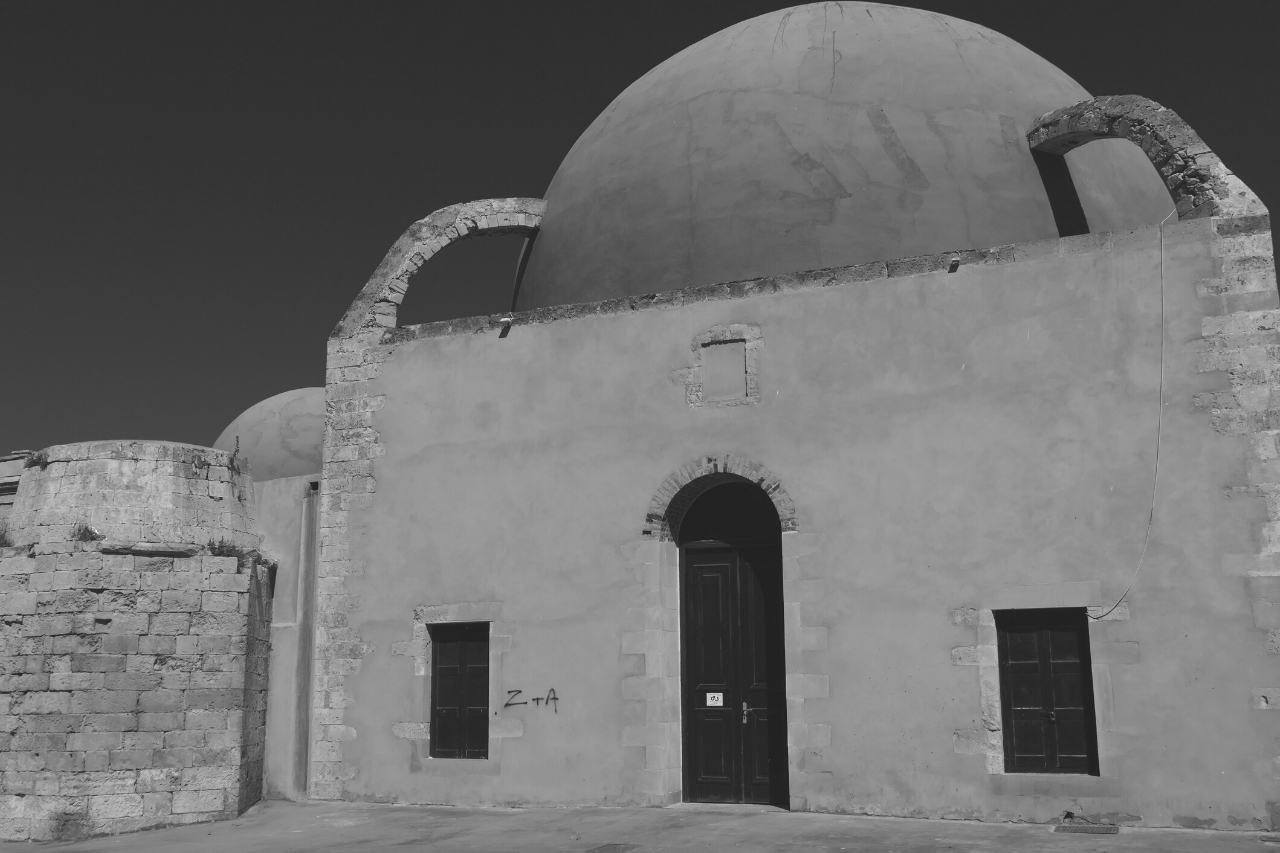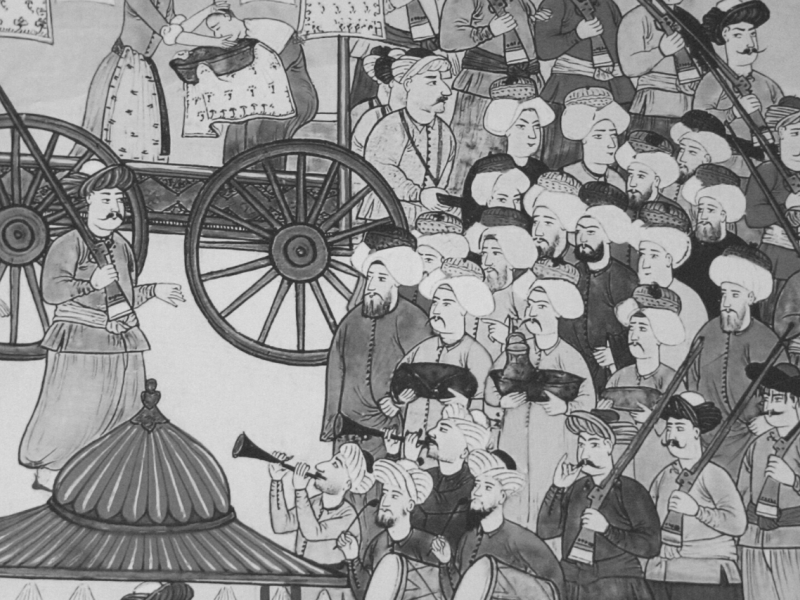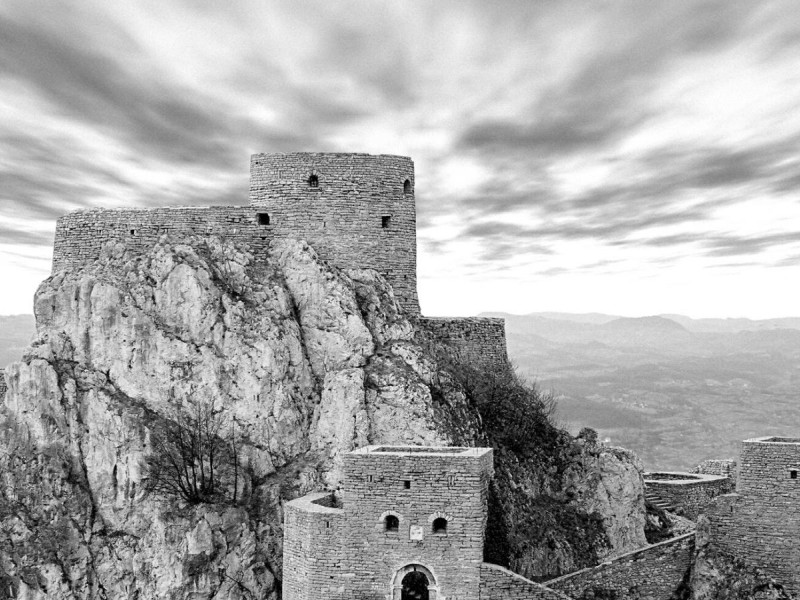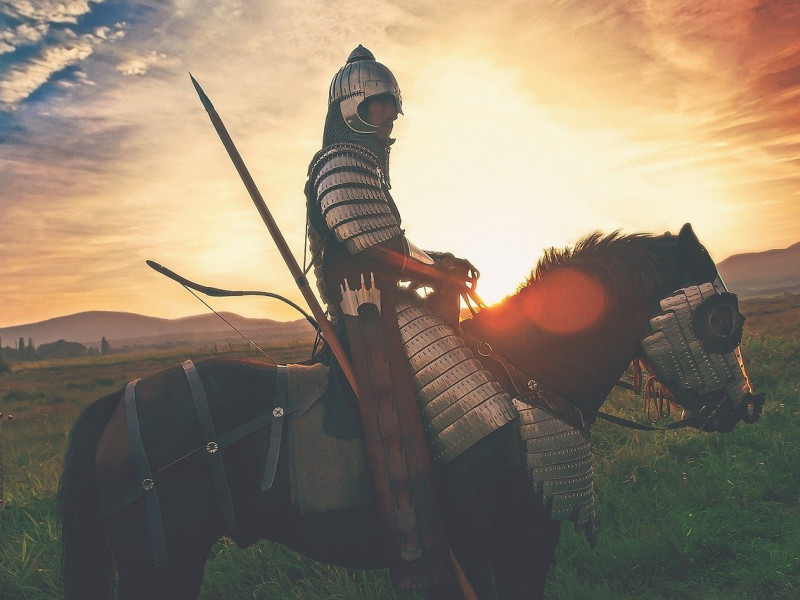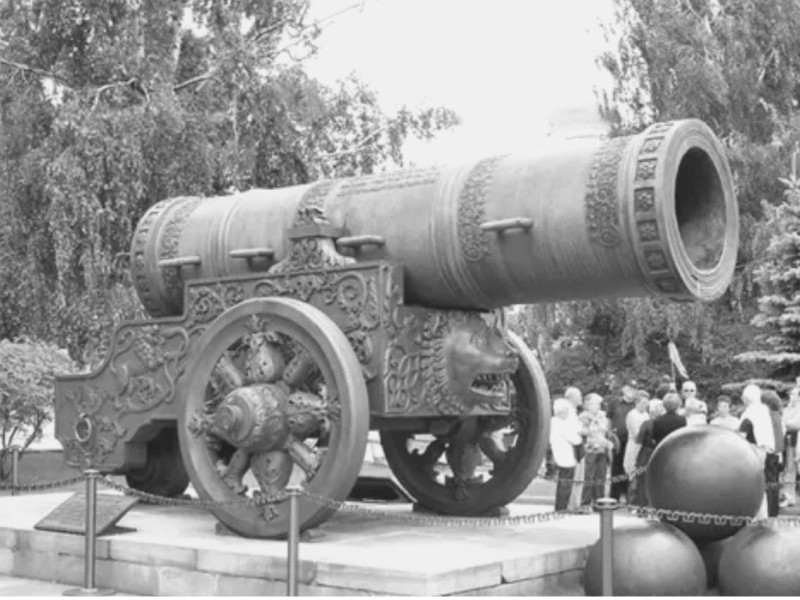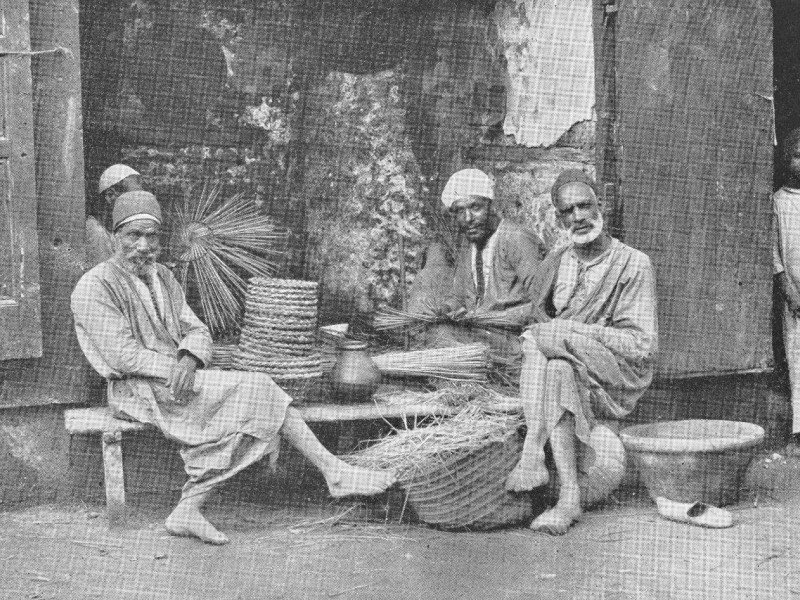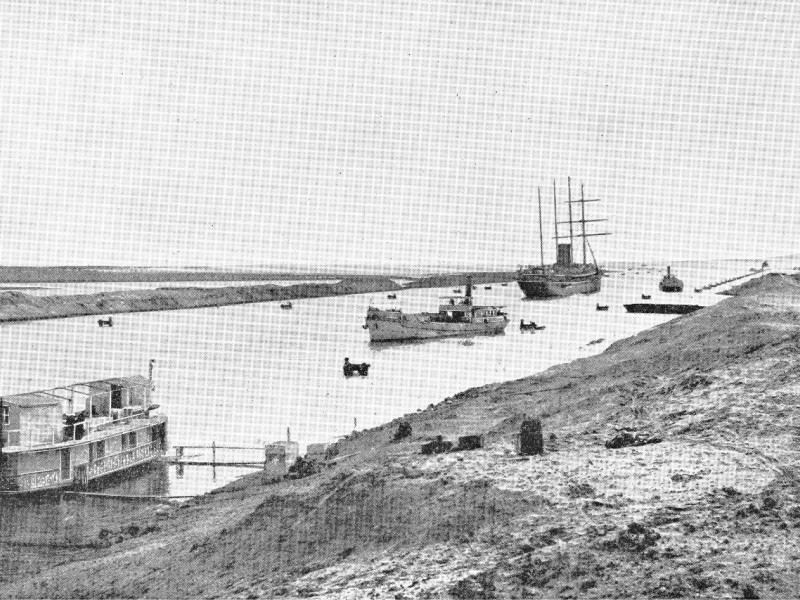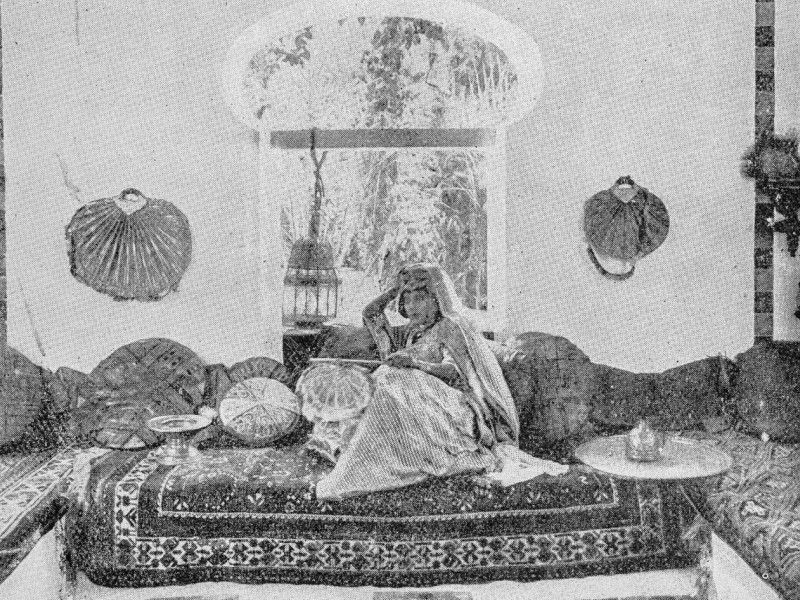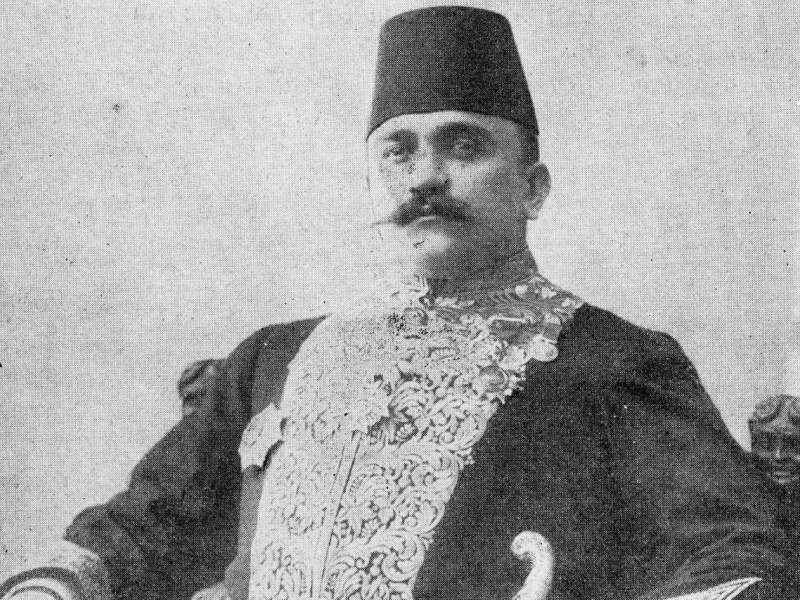Janissary: The Ottoman Soldier That Lived Between Myths and Truth
Janissary is a term that designates one of the elite members of the Ottoman Sultan’s army. They were established during the rule of Sultan Orhan, the second sultan of the Ottoman dynasty.
Most Janissaries were staffed from the devshirme system. The Devshirme was a practice of child slavery: Christian male children from the Balkans were enslaved, converted to Islam, and later trained for the Ottoman Army.
The Ottoman Empire was founded in 1299 AD, after the decline of the Seljuq Turks in Anatolia. Its expansion started after its successful conquest of Constantinople. Most of their success is brought by one brilliant elite fighting force: the Janissaries. Learn everything about their origins and history in this article!
What Were Janissaries?
For the first 200 years since their founding, the Janissaries helped the Ottoman Empire become one of the largest empires in history. They were not the most numerous fighters but they were probably the most skilled and cunning of all. Janissaries are often considered the first modern professional army corps in Europe.
Ottoman Janissaries coexisted with many other military units. They weren’t the first nor were they the last. All of the Ottoman corps had distinct modes of recruitment. Each also had a different status in society and specific roles in the war.
The Janissaries were known for their loyalty and solidarity towards their group. Despite being enslaved as children and being raised to be loyal to the Sultan, Janissaries were very different from slaves because they received regular salaries.
However, they still had to follow strict rules. For example, they couldn’t marry before the age of 40. Janissaries also could not engage in trade and other commercial activities.
The Janissary Uniform
Janissaries often wore long tunics and tall bork hats. The Janissary hat had jeweled ornaments in the forehead area and a long tail that would go down the wearer’s back.
Apparently, this tail was useful for shading their neck while they were out in the sun. The Janissary uniform also has a cloth belt, where these soldiers used to store their powder horn and sword. Traditionally, Janissaries carried a rifle in their hands.
The symbolism of the Janissary army was closely related to food. Each of the corps had a name that was associated with food. For example, there was a soup squadron, dessert squadron, rice squadron and so on.
The Career of a Janissary
Through hard work, Janissaries could even be promoted to become a general or vizier, or even a grand vizier, whose rank was considered second to the Sultan. Of course, Janissaries were forbidden to become Sultans.
The Ottomans would always reserve the highest position for themselves. However, Janissaries were awarded greatly for their service. After serving in the sultan’s household, many of them were granted some land, where they could finally settle and collect taxes from the locals.
Despite all the rewards, there were also limitations for the Ottoman Empire Janissaries. They were subject to strict rules of conduct and could not take a wife before they were 40. They were also cut off from broader society through special laws that regulated their daily life.
Although they could own estates, these weren’t their private property. As such, Janissaries could not sell them or pass them down to their children. The Sultan also had life and death power over them. He could decide to reward them or kill them based on a whim.
The Influence of Janissaries
Because of their almost familial relationship with the Sultan, the Janissaries became a powerful influence in the Ottoman Empire. After the late 16th century, extreme changes in the system abolished the celibacy rule.
However, it was only in the early 18th century that Ottomans abandoned the practice of recruitment by enslavement. This made it possible for Muslim Turks to get into the elite Ottoman soldiers group.
Their numbers also grew from twenty thousand to more than a hundred thousand by 1826. Janissaries began to pursue non-military paths such as trade and politics. There was also a time when Janissaries became kingmakers and rebels, before the abolishment of the corps in 1826, after a bloody revolt. During this time, thousands of Janissaries were killed or banished.
Origins
The history of the Janissary dates back to the 14th century. At that time, the Ottomans had managed to occupy the Middle East, North Africa, and some parts of South-Eastern Europe.
In a sense, Janissaries reflected the expansive nature of the rise of the Ottoman state. Soon, the Turkish civilization became a flourishing city-state that started to merge the beliefs of traditional Islam, Turkish shamanism, and Christianity. Under the leadership of the Ottoman Sultan and his Janissaries, the Empire thrived and succeeded.
The dervishes who were considered heretics in other Islamic countries found their place in the Ottoman military. Among all the dervishes, the Bektashi sect became the most influential, to the point that it was responsible for the creation of the first Janissaries.
Based on historical records, it was Ali Pasha who convinced Sultan Orhan to create new soldiers that were truly loyal to him.
It was then Sultan Murad I who created the Janissary corps in 1365. Originally, the unit was formed through Dhimmi, non-Muslim youths that were prisoners of war. Since the Sultan didn’t trust the voluntary soldiers, he wanted to create a unit that would be devoted to him.
Identikit of a Janissary
The Janissaries were young Christian slaves who were prisoners of wars from the Balkan territories. Raised in the Islamic faith, they were either trained to become administrators for the sultan or his personal military and bodyguards. Janissaries were the first Ottoman standing army.
They replaced the Sultan’s forces that previously consisted of tribal ghazis. The latter, despite being Muslim, had low morale and couldn’t always be trusted.
The Janissaries were known particularly for their military prowess. Living a life of discipline made the Janissaries the most powerful scourge of Europe. By the 16th century, they became a formidable contingent of professional soldiers.
When the Janissaries finally killed a Sultan, the man whom they swore to protect, the idea of disbanding them became popular amongst the Ottoman rulers. This idea, though, was not acted upon until the 19th century.
Janissary Recruitment and Devshirme
In the time of Murad I, Ottomans took several thousands of war prisoners. Furthermore, the sultan created a blood tax system called the Devshirme. Basically, Ottoman authorities could take Christian boys to work as slaves from the Christian territories conquered by the Sublime Porte.
Instead of killing the Christians on their territories, the Ottomans started using the prisoners as Kapikulu Ocaklari, meaning “court slaves.” From these slaves, they selected the fittest young men, whom they trained for service in the Sultan’s personal army. These were known as the first Janissaries.
The Selection of Future Janissaries
During recruitment, a recruiting officer also known as the drover would go to Christian areas. They would select the candidates — boys from 8 to 10 years of age — by stripping them naked and inspecting them for physical deformities and mental health issues. The recruits were then accompanied by soldiers on their journey to the east where they were beaten if they tried to escape.
Many Christian families tried to protect their sons from enslavement. Although becoming Janissary had the potential of bringing wealth and power, many parents feared the system. There have been many attempts by families to evade the enslavement draft.
However, drovers led away tens of thousands of boys, brought to them by the local Christian priests. Most of these boys came from rural Balkan villages. In the eyes of the Ottomans, they were fitter and wiser than the kids in the city.
Almost none of the boys were Balkan Greeks, since most of them lived in urban areas. There were also no Jews. When a Christian boy was recruited to the devshirme system, he was first sent to Turkish families to learn the language, religion, and culture of Ottoman society.
While the enslavement was only limited to Christian boys, sometimes young Christian girls were bought and sold to the officials. Once acquired, they would become wives and concubines for high-ranking Ottomans. Thus, it shouldn’t come as a surprise that some sultans were born of slave mothers.
The Training of the Future Janissaries
The smartest ones from the bunch were trained for office positions. The rest of them would grow up as Turkish young men. They would work in the lands of Turkish families until they reached the age for military training. After four to eight years of work, the boys could start to train to become a Janissary at Gallipoli.
For another four to eight years, they would go into rigorous infantry training until their final examination. After becoming Janissaries, they would receive honor and rewards after every success in battle. For a long time, they were considered the finest infantry of Europe.
By the end of Murad’s reign, the Devshirme became the main recruiting method for the Janissaries. Because enslaving your own subjects — including Christians — was against Islam, the Ottomans found a way around this commandment and decided to take slaves from the Balkans.
The Devshirmee system earned different reactions across different locations and periods in time. While some parents hid their children and bribed officials to not take their sons away, others volunteered their children in hopes that they would have a better life than in a rural farming village.
Janissary Training
Janissaries lived together in garrisons, where they studied martial arts and socialized among themselves. Their training was hard and they were disciplined constantly. Janissaries weren’t allowed to marry or to own property.
They were also forced to remain celibate and were forbidden to have beards, as they were reserved for free men. However, they could grow mustaches.
These rules were part of the Janissary’s lives until the 16th century. After that, the restrictions were slowly removed. In 1638, the ban on marriage for Turkish Janissaries was lifted.
There was even a period in history when the Janissary corps pressured the Sultan to allow them to have children and have said children become members of the Corps. It wasn’t long before Janissaries engaged in business and started asking for payment from the Sultan.
The Janissaries were excellent archers, but they became more known for their use of firearms. From swords and spears, the infantry started carrying muskets. Back then, only a standing army could master firearms. Aside from firearms, Janissaries also used grenades and hand cannons.
Soldiers and Artists: The Role of Music
The Janissaries even had their own distinct form of music and band. Their band was called the mehterân and they would go to war whilst bringing these musicians into battle. The band music would bring fear towards their enemy while making the janissaries more courageous.
Europeans would soon follow these techniques and would create their military bands for war. The eerie music, together with the power of the Ottoman logistics, could instill terror in any enemy.
The Sublime Porte had military groups in charge of every aspect of warfare including medical teams, road engineers, camp management, food, and Janissaries weapons and ammunition. These innovations made the Ottoman army the most dangerous force in Europe.
The Rise of the Janissaries
For centuries, Janissaries terrorized Europe and became a source of admiration for the West. They were brilliant warriors who were strong, smart, and rebellious. Janissaries were once poor Christian boys who lived in the provinces of the Ottoman Empire.
Once they converted to Islam and became Janissaries, they earned the right to climb the Ottoman social ladder and become powerful members of the Sultan’s household.
They were essential to the Sultan, and so they were absorbed into the Sultan’s social group. This gave them access to various matters of the state including the political, economic, and cultural life of Ottoman society.
Aside from protecting the Sultan, the Janissaries also handled complicated military tasks. They were their unique infantry contingent that functioned in a special way, different from most other military groups. They were in charge of keeping peace and order in Istanbul and throughout the empire. Outside of the capital, the Janissaries would act as policing bodies.
From Slaves to War Heroes and Political Personalities
Janissaries, who began as loyal slaves that supported the rule of the Sultan, also became important intermediaries between state and society. They would negotiate demands and talk to the Sultan about societal issues. Rather than simply being soldiers, the Janissaries had a key political position that allowed them to exert significant power on society and state.
The Janissaries also delivered some significant victories to the Ottomans, including the conquest of Constantinople and the battle against the Iranian Safavids. Janissaries showed exemplary skills on the battlefield and ended many confrontations with swift gunfire attacks.
These victories led many Europeans to believe that the Janissary was the Ottoman’s “secret weapon”.
The Rights and Privileges of Janissaries
In the beginning, Janissaries only had few rights. However, during the 15th century, the Janissaries attained powerful political force within the Ottoman state. This gradually granted increasing rights. This made them more autonomous, but also a potential threat to the state.
By 1683, service with Janissaries became so desirable that the Devshirme system was abolished. This meant that both Christian and Muslim free men were allowed to apply their sons for service.
By the 1820s, there were already 135,000 Janissaries, which became very expensive for the empire. The Janissaries also were against the modernization of the army, so the empire started to progressively replace them with better and more disciplined modern troops.
Janissaries were both the military and police of the Ottoman State. However, this wouldn’t last forever. Due to the rapid increase of Janissaries, their discipline diminished. They lost their ability to manage war successfully. They also became unpredictable and started rebellions. This lack of control led to the downfall of the Janissaries.
The Revolt of the Janissaries
The power and influence of the Janissaries allowed them to have political roles in the palace. By the time of the reign of Bayezid II, Janissaries were paid soldiers. The maintenance costs of this corps proved increasingly unaffordable for the empire.
This led to tension between the Janissaries and the sultan. Sultan Osman II tried to discipline Janissaries and cut their pay. However, he failed and ended up being executed by his own elite soldiers.
With more power came less responsibility, then arrogance. The Janissaries began to detach themselves from the state and the Sultan. They started to grow closer with the civilian population, delving into trade and commercial ventures.
They would also grow more and more unsatisfied with the government. This state of things would eventually result in riots and mutiny that greatly affected the stability of the Ottoman Empire.
After this, the Janissaries would frequently engineer palace coups to blackmail the reigning Sultan. They even conspired with court officials to overthrow Sultans. The Janissaries also started engaging in trade, losing their military discipline. The economic interests caused them to develop other interests that didn’t align with the Sultan. At some point, they even became initiators of palace intrigue and revolts.
Janissaries became so powerful that they could make and overthrow sultans. During this time, they dethroned almost 12 Sultans, simply replacing them with the ones they believed were more favorable.
It was the Great Sultan Mahmud II who finally put an end to their excessive power. Mahmud gathered scholars and called the people to resist the Janissaries. He also sought help from the Rumelians and Anatolians to defeat the Janissaries.
The Dismantling of the Janissaries
In 1826, in a response to their revolt, Sultan Mahmud II launched an attack on the Janissary barracks in Istanbul. Mahmud II organized a large contingent to wage war on the Janissaries who revolted. The Janissaries responded by setting the city of Constantinople on fire, whilst robbing and pillaging the surrounding area.
In the end, their barracks were burned to the ground. Most of the Janissaries were killed or banished and the whole corps was finally abolished. The Janissaries were permanently disbanded, never to rise again. The once-formidable force of the Ottoman empire, which terrorized the whole of Europe, came to a horrible, abrupt end.
Many scholars believe that the Janissary revolt was a product of their solidarity. Their group thinking allowed them to develop a single agenda from the myriad of individual interests. Despite the Janissaries’ admiration for their masters, when they finally came together, they knew they had enough power to defeat the Sultan. And this is what brought about their end.
Conclusion
Janissaries, established during the rule of Sultan Orhan, were the elite fighters of the Ottoman army
Most Janissaries were staffed from the Devshirme system. As such, they were Christian boys that were enslaved, converted to Islam, and later militarily trained. Unlike slaves, they received a salary.
Because of their almost familial relationship with the Sultan, the Janissaries became a powerful influence in the Ottoman Empire.
Janissaries often wore long tunics and tall bork hats. Their bork hats had jeweled ornaments in the forehead area and a long tail that would go down the wearer’s back.
Aside from protecting the Sultan, the Janissaries also handled complicated military tasks.
By 1683, service with Janissaries became so desirable that the Devshirme system was abolished. This meant that both Christian and Muslim free men were allowed to apply their sons for service.
Janissaries became so powerful that they managed to dethrone 12 Sultans, then replacing them with the ones they believed were more favorable.
In 1826, in a response to their revolt, Sultan Mahmud II launched an attack on the Janissary barracks in Istanbul and burned them to the ground. Most of the Janissaries were killed or banished, and the whole corps was finally abolished.
